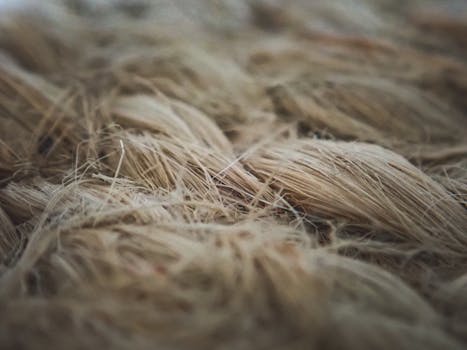Natural Fibers, Global Markets: Africa’s Role in the Sustainable Textile Revolution

Natural Fibers, Global Markets: Africa’s Role in the Sustainable Textile Revolution
Natural Fibers, Global Markets: Africa’s Role in the Sustainable Textile Revolution. The global textile industry is undergoing a significant transformation, driven by the growing demand for sustainable and eco-friendly products. Africa is playing a significant role in this revolution, with its rich resources of natural fibers. The continent is home to a wide range of natural fibers, including cotton, wool, silk, and plant-based fibers like hemp, flax, and jute.
Africa’s natural fiber industry has a long history, with many countries on the continent having a strong tradition of textile production. However, in recent years, the industry has faced significant challenges, including low productivity, limited access to markets, and competition from synthetic fibers. Despite these challenges, Africa’s natural fiber industry is experiencing a resurgence, driven by the growing demand for sustainable textiles and the continent’s rich resources of natural fibers.
The Benefits of Natural Fibers
Natural fibers have several benefits, including their sustainability, durability, and comfort. They are also biodegradable, non-toxic, and require less energy to produce than synthetic fibers. In addition, natural fibers have a unique aesthetic and tactile quality that is highly prized by consumers. The use of natural fibers also supports rural development and poverty reduction, as many small-scale farmers and artisans are involved in the production of natural fibers.
The global market for natural fibers is growing rapidly, driven by the increasing demand for sustainable textiles. The market is expected to reach $43.4 billion by 2025, growing at a compound annual growth rate (CAGR) of 7.5% from 2020 to 2025. Africa is well-positioned to take advantage of this growing market, with its rich resources of natural fibers and its strategic location near major markets in Europe and Asia.
Africa’s Natural Fiber Industry
Africa’s natural fiber industry is diverse and widespread, with many countries on the continent having a strong tradition of textile production. The industry is dominated by small-scale farmers and artisans, who produce a wide range of natural fibers, including cotton, wool, silk, and plant-based fibers like hemp, flax, and jute.
Cotton is one of the most widely produced natural fibers in Africa, with countries like Egypt, South Africa, and Nigeria being among the largest producers. The cotton industry in Africa is significant, with the continent accounting for around 10% of global cotton production. However, the industry faces significant challenges, including low productivity, limited access to markets, and competition from synthetic fibers.
Other natural fibers, like wool and silk, are also produced in Africa, although on a smaller scale. Wool is produced in countries like South Africa and Lesotho, while silk is produced in countries like Madagascar and Tanzania. Plant-based fibers like hemp, flax, and jute are also produced in Africa, with countries like Kenya and Ghana being among the largest producers.
The Challenges Facing Africa’s Natural Fiber Industry
Despite the many benefits of natural fibers, Africa’s natural fiber industry faces significant challenges. One of the major challenges is low productivity, which is due to a lack of investment in the industry and limited access to technology and training. Many small-scale farmers and artisans in Africa lack the skills and resources needed to produce high-quality natural fibers, which makes it difficult for them to compete with larger producers in other parts of the world.
Another challenge facing Africa’s natural fiber industry is limited access to markets. Many small-scale farmers and artisans in Africa lack the connections and resources needed to access major markets in Europe and Asia, which makes it difficult for them to sell their products. In addition, the industry faces competition from synthetic fibers, which are often cheaper and more widely available than natural fibers.
The Opportunities for Africa’s Natural Fiber Industry
Despite the challenges facing Africa’s natural fiber industry, there are many opportunities for growth and development. The growing demand for sustainable textiles is driving the demand for natural fibers, and Africa is well-positioned to take advantage of this trend. The continent’s rich resources of natural fibers, combined with its strategic location near major markets in Europe and Asia, make it an attractive location for textile production.
In addition, there are many initiatives underway to support the development of Africa’s natural fiber industry. These initiatives include training programs for small-scale farmers and artisans, as well as investments in technology and infrastructure. There are also many organizations and companies working to promote the use of natural fibers and support the development of sustainable textile production in Africa.
Conclusion
In conclusion, Africa is playing a significant role in the sustainable textile revolution, with its rich resources of natural fibers. The continent’s natural fiber industry is diverse and widespread, with many countries having a strong tradition of textile production. While the industry faces significant challenges, including low productivity and limited access to markets, there are many opportunities for growth and development. With the growing demand for sustainable textiles and the support of initiatives to promote the use of natural fibers, Africa’s natural fiber industry is poised for significant growth in the coming years.



